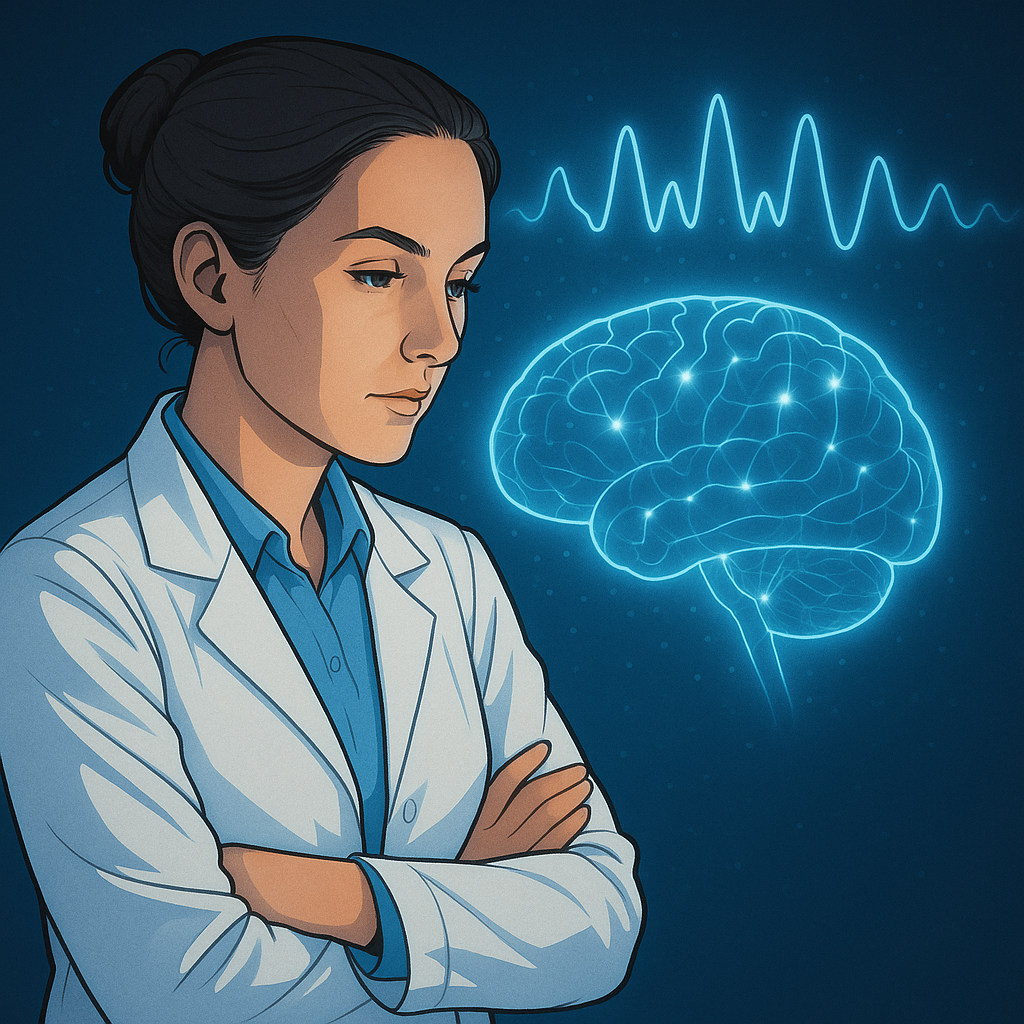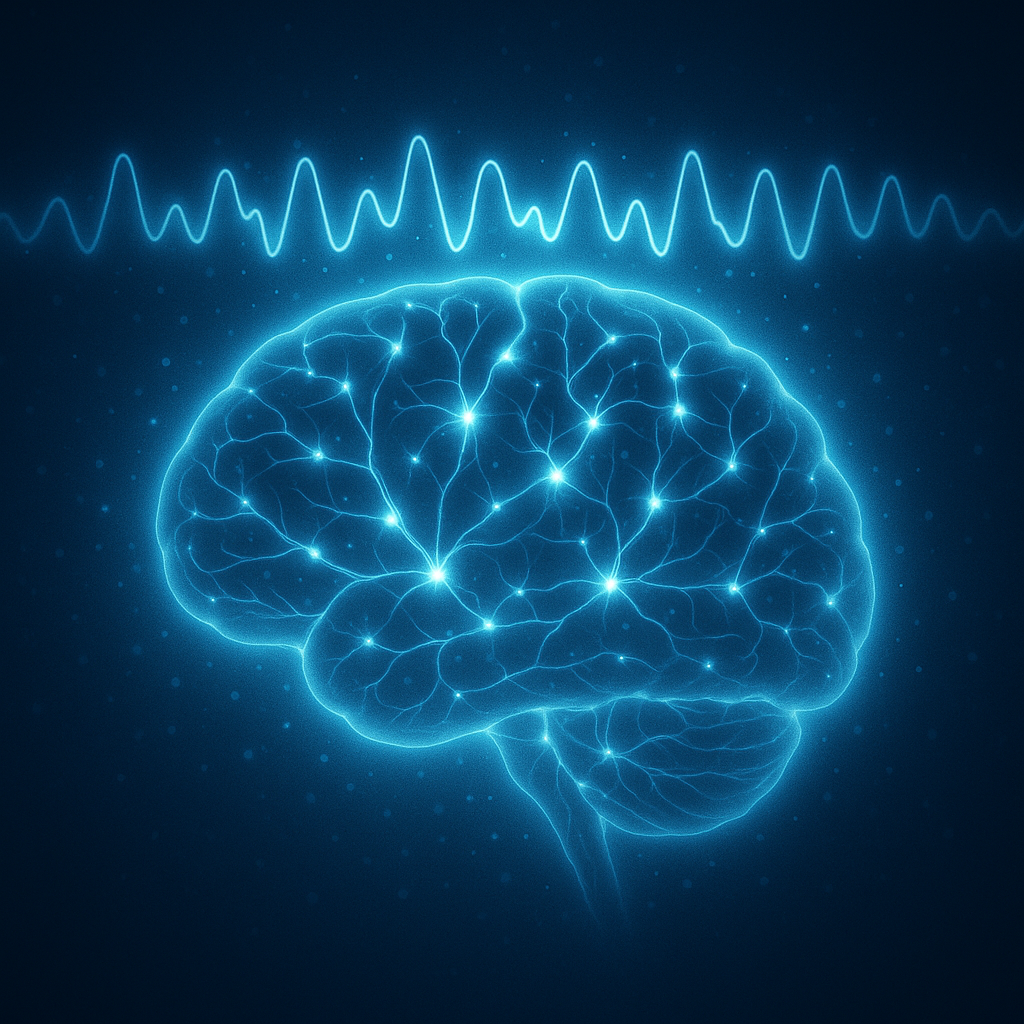Revolutionary neuroscience research has uncovered a remarkable phenomenon: erotic and mainstream ASMR doesn’t just create momentary tingles—it fundamentally rewires brain activity in ways that persist long after the video ends. This groundbreaking discovery reveals that ASMR may function as a form of technologically-mediated brain training, capable of enhancing attention, memory, and emotional regulation through sustained neural changes.
The 45-Minute Afterglow: A Neuroscience Breakthrough
The most striking discovery in recent ASMR research is what scientists call the “afterglow effect”—a measurable change in brain activity that can last up to 45 minutes after ASMR exposure ends. Using sophisticated EEG technology, researchers at Goldsmiths University of London recorded brain activity before, during, and after participants watched ASMR videos, uncovering something unprecedented in the field of sensory neuroscience.
Research provides the first evidence that the sources of ASMR tingling sensations in the brain may arise from decreases in higher frequency oscillations, and that ASMR may induce a sustained relaxation state. The research team found that increases in alpha power during the ASMR experience persisted for up to 45 minutes after the videos ended, indicating a long-term, fading ASMR effect that fundamentally alters brain state.
This discovery challenges everything we thought we knew about ASMR. Rather than being a simple sensory response, ASMR appears to create persistent neural changes that continue working long after the stimulus disappears—much like how meditation or other brain training practices create lasting effects on neural networks.
The Brain’s Frequency Revolution
The afterglow effect represents a comprehensive rewiring of the brain’s electrical activity across multiple frequency bands. EEG studies reveal that ASMR creates robust changes in five different frequency bands over multiple brain regions, fundamentally altering how the brain processes information.

Alpha Waves: The Attention Amplifiers
The most significant change occurs in alpha waves (8-13 Hz), which increase dramatically in the parietal, frontal, and temporal regions during ASMR. These alpha waves are crucial for attention regulation and have been associated with the brain’s ability to filter out distractions. The fact that these increases persist for 45 minutes suggests that ASMR may be training the brain to maintain better focus and attention over extended periods.
The enhanced alpha may represent the suppression of distractors irrelevant to the goal of vocal processing. This finding suggests that ASMR doesn’t just feel relaxing—it actually enhances the brain’s ability to filter out irrelevant information while maintaining focus on important stimuli.
Beta Waves: The Cognitive Enhancers
ASMR also creates complex changes in beta waves (13-30 Hz), which are associated with active concentration and cognitive processing. The research shows increases in low beta power in parietal and temporal regions, while decreasing high beta power in parietal and occipital areas. This pattern suggests that ASMR may be optimizing cognitive function by enhancing focused attention while reducing mental hyperarousal.
Interestingly, beta wave modulation has been found in tasks involving sensorimotor processing, auditory processing, and emotional recognition—all processes that are particularly relevant for ASMR experiences. This suggests that the brain changes induced by ASMR may enhance these fundamental cognitive abilities.
Gamma and Delta: The Deep Brain Reset
ASMR also decreases gamma waves (30-80 Hz) in occipital regions and delta waves (1-2 Hz) in prefrontal areas. Gamma waves are associated with high-level cognitive processing and consciousness, while delta waves are linked to deep relaxation and restorative processes. The reduction in these frequencies suggests that ASMR may be inducing a state of deep cognitive rest that allows the brain to reset and recharge.
Memory Enhancement and Cognitive Training
Perhaps most remarkably, research demonstrates that ASMR’s brain-rewiring effects translate into measurable improvements in cognitive function. A controlled study found that participants who watched ASMR videos for 20 minutes daily over 14 days showed significant improvements in short-term memory compared to control groups.
The memory enhancement appears to be linked to ASMR’s activation of the medial prefrontal cortex, a brain region crucial for memory formation and retrieval. This shows that there is a possibility that ASMR can affect the memory function since the medial prefrontal cortex has a role in memory function.
This finding suggests that ASMR may function as a form of cognitive training that enhances memory consolidation and retrieval through repeated activation of memory-related brain circuits. The 45-minute afterglow effect means that these cognitive benefits persist well beyond the ASMR experience itself, potentially improving mental performance throughout the day.
The Mindfulness Connection: Rewiring Through Attention
ASMR’s brain-rewiring effects show striking similarities to meditation and mindfulness practices. Research reveals that individuals who experience ASMR score significantly higher on measures of mindfulness, particularly on the Mindful Attention and Awareness Scale. This connection suggests that ASMR may be training the brain in mindfulness-like attention regulation.
Both mindfulness and ASMR can lead to a feeling of relaxation that enhances people’s subjective well-being. However, ASMR appears to achieve these effects through a different pathway—sensory-focused attention rather than the more abstract attention training of traditional meditation.
The mindfulness connection is particularly significant because meditation has been shown to create structural changes in the brain that persist over time. Studies demonstrate that just six weeks of meditation practice can increase the size of brain regions involved in attention control and emotional regulation. ASMR appears to be achieving similar neuroplastic changes through a different mechanism.
The Flow State Highway
Research suggests that ASMR may induce brain states similar to “flow”—the optimal state of consciousness characterized by complete absorption in activity. Studies show that individuals who score highly on flow measures report experiencing a higher number of ASMR triggers, suggesting that the ability to enter flow states may facilitate ASMR experiences.
This connection is crucial because flow states are associated with enhanced cognitive performance, creativity, and learning. The fact that ASMR can induce flow-like states suggests that it may be training the brain to more easily access these optimal performance states.
Links between number of effective triggers and heightened flow state suggest that flow may be necessary to achieve sensations associated with ASMR. This finding indicates that ASMR may be functioning as a gateway to enhanced cognitive states that persist beyond the immediate experience.
Neuroplasticity in Action
The 45-minute afterglow effect represents neuroplasticity in real-time—the brain’s remarkable ability to rewire itself in response to experience. Unlike traditional brain training programs that require weeks or months to show effects, ASMR appears to create immediate and persistent changes in brain activity patterns.
This rapid neuroplasticity may be due to ASMR’s unique combination of sensory stimulation, attention focus, and emotional engagement. The brain regions activated during ASMR—including the insula, prefrontal cortex, and temporal lobes—are precisely those involved in attention regulation, emotional processing, and sensory integration.
The sustained nature of these changes suggests that regular ASMR consumption may be training the brain to maintain these optimal activity patterns for longer periods. This could explain why many people report that ASMR helps them focus, study, and maintain emotional balance throughout the day.
The Technologically-Mediated Brain Training Revolution
What makes ASMR particularly revolutionary is its accessibility and immediacy. Unlike meditation, which requires training and practice, or clinical neurofeedback, which requires expensive equipment, ASMR can be accessed instantly through readily available online content. This makes it a form of democratized brain training that anyone can use to enhance their cognitive function.
The research suggests that ASMR videos may be functioning as customizable brain training programs. Different types of ASMR content appear to activate different neural networks: audiovisual ASMR activates the reward system and frontal cortex, while audio-only ASMR primarily activates the insula and emotional processing regions.
This specificity means that individuals could potentially tailor their ASMR consumption to target specific cognitive functions—using certain types of content to enhance memory, others to improve attention, and still others to promote emotional regulation.
The Future of Cognitive Enhancement
The discovery of ASMR’s afterglow effect opens up entirely new possibilities for cognitive enhancement and therapeutic intervention. The fact that simple sensory stimulation can create lasting changes in brain activity suggests that we may be on the verge of a new era in neurotechnology.
Future research is already exploring whether ASMR could be used therapeutically to treat attention disorders, anxiety, depression, and cognitive decline. The 45-minute persistence of brain changes suggests that strategic ASMR consumption could be used to maintain optimal brain states throughout the day.
If ASMR stimuli do indeed prime the individual to be more capable of filtering out distractions, this could explain the reported use of ASMR as a study aid. This finding suggests that ASMR may be particularly valuable for students, professionals, and anyone seeking to enhance their cognitive performance.
Conclusion: The Brain’s New Frontier
The discovery of ASMR’s afterglow effect represents a fundamental shift in our understanding of how the brain can be rewired through sensory experience. Far from being a simple relaxation response, ASMR appears to be a powerful tool for cognitive enhancement and neural optimization.
The 45-minute persistence of brain changes suggests that ASMR may be training the brain to maintain optimal activity patterns long after the stimulus ends. This represents a new model of technologically-mediated neuroplasticity that could revolutionize how we approach cognitive training, stress management, and mental health.
As research continues to unveil ASMR’s mechanisms, we may discover that this seemingly simple sensory phenomenon is actually one of the most accessible and effective tools for brain training ever discovered. The afterglow effect is just the beginning—the full potential of ASMR’s ability to rewire the brain remains to be explored.

